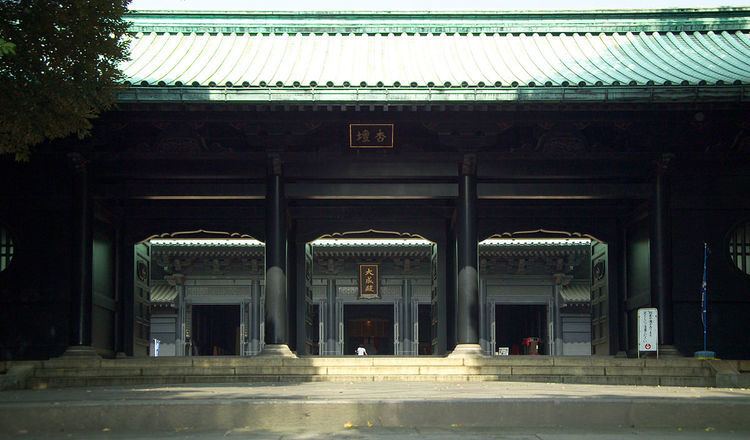Phone +81 3-3251-4606 | ||
 | ||
Address 1-4-25 Yushima, Bunkyo, Tokyo 113-0034, Japan Hours Closing soon · 9:30AM–5PMSunday9:30AM–5PMMonday9:30AM–5PMTuesday9:30AM–5PMWednesday9:30AM–5PMThursday9:30AM–5PMFriday9:30AM–5PMSaturday9:30AM–5PMSuggest an edit Similar Yushima Tenman‑gū, Holy Resurrection Cathedral, Kanda Shrine, Shohei Bridge, Koishikawa Kōrakuen Garden | ||
Yushima seid bunkyo ku tokyo 4k
Yushima Seidō (湯島聖堂, literally "Hall of the Sage in Yushima"), located in the Yushima neighbourhood of Bunkyō, Tokyo, Japan, was established as a Confucian temple in the Genroku era of the Edo period (end of the 17th century).
Contents
- Yushima seid bunkyo ku tokyo 4k
- Tokugawa bureaucrat training center
- Daigaku no kami
- Yushima Seids notable alumni and academics
- Institutional history after 1871
- Transportation
- References
Tokugawa bureaucrat training center
The Yushima Seidō has its origins in a private Confucian temple, the Sensei-den (先聖殿), constructed in 1630 by the neo-Confucian scholar Hayashi Razan (1583–1657) in his grounds at Shinobi-ga-oka (now in Ueno Park). The fifth Tokugawa shogun, Tsunayoshi, moved the building to its present site in 1690, where it became the Taiseiden (大成殿) of Yushima Seidō. The Hayashi school of Confucianism moved at the same time.
Under the Kansei Edict, which made neo-Confucianism the official philosophy of Japan, the Hayashi school was transformed into a state-run school under the control of the shogunate in 1797. The school was known as the Shōhei-zaka Gakumonjo (昌平坂学問所) or Shōheikō (昌平黌), after Confucius' birthplace, Changping (昌平, pronounced Shōhei in Japanese). During the time of the Tokugawa shogunate, the school attracted many men of talent, but it was closed in 1871 after the Meiji Restoration.
Daigaku-no-kami
The title Daigaku-no-kami identifies the head of the chief educational institution of the state. It was conferred by the shogun in 1691 when the Neo-Confucian academy moved to land provided by the shogunate at Yushima. In the years which followed, this academic title became hereditary for the ten descendants who followed in succession.
In the early years of the Edo period, the seidō or Confucian "Hall of Sages" was located in Shinobugaoka; but in 1691, it was moved to a new location at the top of a hill in the Yushima section of Edo. The hereditary heads of the Edo daigaku are identified below.
Yushima Seidō's notable alumni and academics
Institutional history after 1871
Since the Meiji restoration, Yushima Seidō has temporarily shared its premises with a number of different institutions, including the Ministry of Education, the Tokyo National Museum, and the forerunners of today’s Tsukuba University and Ochanomizu University (which is now in a different location but retains "Ochanomizu" in its name).
The site of the school is now occupied by the Tokyo Medical and Dental University.
The colour scheme of the original Taiseiden is believed to have been one of vermilion paint with verdigris. After being burnt down on a number of occasions, the Taiseiden was rebuilt in 1799 in the style of the Confucian temple in Mito, which used black paint. This building survived through the Meiji period and was designated a national historical site in 1922, but was burnt down in the Great Kantō earthquake of the following year. The current Taiseiden is in reinforced concrete and was designed by Itō Chūta.
Inside the compound is the world's largest statue of Confucius, donated in 1975 by the Lions Club of Taipei, Taiwan. There are also statues of the Four Sages, Yan Hui, Zengzi, Kong Ji, and Mencius.
In the 1970s, the Taiseiden was used as the location for scenes in NTV's Monkey television series.
Along with the nearby Yushima Tenman-gū, the Yushima Seidō is a mecca for students praying for success in their examinations.
Transportation
Ochanomizu Station and Shin-Ochanomizu Station are nearby.
